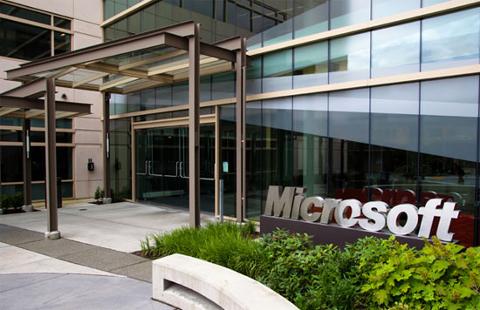
The recent article
“Predictive Analytics and the Fiscal Cliff” raised some interesting questions on the use of analytics in economic policy, calling for independent, unbiased analytical tools to bring much-needed transparency to the decision-making process. In Financial Services, IT providers are already responding with modern, Open Source technology as a way to bring transparency to the industry in general and risk analytics in particular. Projects like
QuantLib,
CreditAnalytics,
jQuantLib and
OpenGamma are challenging the way traditional black-box vendors have approached analytics in the past. The case for Open Source analytics is compelling: without access to the software’s source code, how does one know how the resulting numbers or models actually came about? How do you regulate a black box? And in the absence of an industry-wide, open source standard, how do you determine whose model is “correct”? Even more interestingly, new Open Source solutions are altering power structures in financial services. For the first time, smaller market participants and entrants from emerging markets in particular have access to the same set of high-quality analytics tools as the most dominant players–a development that has the potential to overthrow old-school gatekeepers and radically democratize the industry.
The Case for Unified Risk Analytics
Many still argue that trading and risk analytics are a firm's “secret sauce," and, if shared, may jeopardize its future. The truth is, no matter the platform, the final choice will always depend on the trader, not the source code. In fact, open source trading and risk analytics actually empowers the trader. Traditionally, to get the level of control and transparency Open Source solutions allow, firms have had to build everything from scratch, rather than the top 10% that a trader really cares about. Now traders can get customized solutions at a fraction of the cost. Through unified computations for live and risk data, batch reports will be more consistent with a trader’s intraday and live risk figures. The technology should enable traders to monitor their own risk metrics with "official" risk reports overnight, assisting risk managers with monitoring near-real time risk.
The “Correct” Open Source Model
Even within the world of Open Source, there are a multitude of models available to project authors and product vendors that can muddy the water. Some firms have started selling the source code to black-box products to customers, claiming this gives them all the benefits of Open Source (which it clearly doesn’t). Some firms release code under the least permissive licenses possible (such as the AGPLv3), to attempt to ensure that any commercial use ultimately results in a dual license to the vendor. But to establish a standard in this space, neither of those approaches is correct. Financial firms are extremely skeptical of copyleft licenses (whether right or wrong), and merely being able to see the source code of your vendor system doesn’t give you the ability to customize and build that Open Source solutions provide. My experience tells me that the only way to satisfy all the stakeholders in risk and analytics in our modern capital markets environment (whether traders, risk managers, regulators, investors, or anyone else) is through truly Open Source licensing under a permissive (e.g. BSD, MIT, APL) license.
Kirk Wylie is the CEO and Co-Founder of OpenGamma, a fintech startup building an open source risk analytics platform for the financial services industry. Image: Mclek/Shutterstock.com
 The recent article “Predictive Analytics and the Fiscal Cliff” raised some interesting questions on the use of analytics in economic policy, calling for independent, unbiased analytical tools to bring much-needed transparency to the decision-making process. In Financial Services, IT providers are already responding with modern, Open Source technology as a way to bring transparency to the industry in general and risk analytics in particular. Projects like QuantLib, CreditAnalytics, jQuantLib and OpenGamma are challenging the way traditional black-box vendors have approached analytics in the past. The case for Open Source analytics is compelling: without access to the software’s source code, how does one know how the resulting numbers or models actually came about? How do you regulate a black box? And in the absence of an industry-wide, open source standard, how do you determine whose model is “correct”? Even more interestingly, new Open Source solutions are altering power structures in financial services. For the first time, smaller market participants and entrants from emerging markets in particular have access to the same set of high-quality analytics tools as the most dominant players–a development that has the potential to overthrow old-school gatekeepers and radically democratize the industry.
The recent article “Predictive Analytics and the Fiscal Cliff” raised some interesting questions on the use of analytics in economic policy, calling for independent, unbiased analytical tools to bring much-needed transparency to the decision-making process. In Financial Services, IT providers are already responding with modern, Open Source technology as a way to bring transparency to the industry in general and risk analytics in particular. Projects like QuantLib, CreditAnalytics, jQuantLib and OpenGamma are challenging the way traditional black-box vendors have approached analytics in the past. The case for Open Source analytics is compelling: without access to the software’s source code, how does one know how the resulting numbers or models actually came about? How do you regulate a black box? And in the absence of an industry-wide, open source standard, how do you determine whose model is “correct”? Even more interestingly, new Open Source solutions are altering power structures in financial services. For the first time, smaller market participants and entrants from emerging markets in particular have access to the same set of high-quality analytics tools as the most dominant players–a development that has the potential to overthrow old-school gatekeepers and radically democratize the industry.
 The recent article “Predictive Analytics and the Fiscal Cliff” raised some interesting questions on the use of analytics in economic policy, calling for independent, unbiased analytical tools to bring much-needed transparency to the decision-making process. In Financial Services, IT providers are already responding with modern, Open Source technology as a way to bring transparency to the industry in general and risk analytics in particular. Projects like QuantLib, CreditAnalytics, jQuantLib and OpenGamma are challenging the way traditional black-box vendors have approached analytics in the past. The case for Open Source analytics is compelling: without access to the software’s source code, how does one know how the resulting numbers or models actually came about? How do you regulate a black box? And in the absence of an industry-wide, open source standard, how do you determine whose model is “correct”? Even more interestingly, new Open Source solutions are altering power structures in financial services. For the first time, smaller market participants and entrants from emerging markets in particular have access to the same set of high-quality analytics tools as the most dominant players–a development that has the potential to overthrow old-school gatekeepers and radically democratize the industry.
The recent article “Predictive Analytics and the Fiscal Cliff” raised some interesting questions on the use of analytics in economic policy, calling for independent, unbiased analytical tools to bring much-needed transparency to the decision-making process. In Financial Services, IT providers are already responding with modern, Open Source technology as a way to bring transparency to the industry in general and risk analytics in particular. Projects like QuantLib, CreditAnalytics, jQuantLib and OpenGamma are challenging the way traditional black-box vendors have approached analytics in the past. The case for Open Source analytics is compelling: without access to the software’s source code, how does one know how the resulting numbers or models actually came about? How do you regulate a black box? And in the absence of an industry-wide, open source standard, how do you determine whose model is “correct”? Even more interestingly, new Open Source solutions are altering power structures in financial services. For the first time, smaller market participants and entrants from emerging markets in particular have access to the same set of high-quality analytics tools as the most dominant players–a development that has the potential to overthrow old-school gatekeepers and radically democratize the industry.

